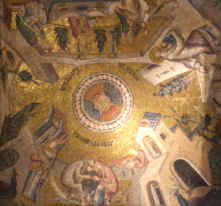
Latest News
New openings in 2025
The Zeyrek Cistern is opened to visits after years of restorations.
Entrance fees
As of 1st of March 2024, many State museums' fees are set in Euros, to be paid its equivalent in Turkish Liras.
Museum Pass
You can buy the "Museum Pass" for foreigners which is valid for 5 days in various museums of Istanbul.
Museums open 7 days
Many State museums in Istanbul operate 7 days a week, except Topkapi Palace.

 The Chora Church, known as Kariye in
The Chora Church, known as Kariye in  The Kariye has the best
The Kariye has the best 